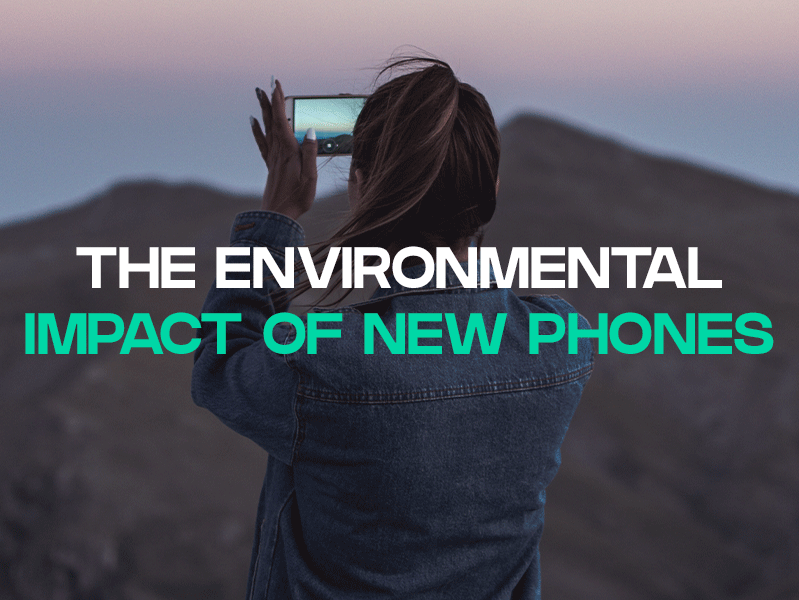
Did you know that smartphones have a significant impact on the environment? Have you thought about how your phone expands your carbon footprint? The smartphone industry affects the planet more than many people realize.
To make smartphones, manufacturers use precious raw materials that must be extracted and processed, and consume natural resources and energy that can affect our air, land, water, plants and animals. So, why not think about it better before purchasing a new phone?
Getting a new phone is exciting, but it can hurt the environment. 57.4 Mt (Million Metric Tonnes) of e-waste was generated in 2021. The total is growing by an average of 2 Mt a year. Besides, there is over 347 Mt of unrecycled e-waste on earth in 2023. Every part of a mobile phone needs different materials to be extracted and processed. Glass, plastic and liquid crystalline are used to make the LCD displays. Circuit boards are made of copper, gold, lead, silver and palladium. And for the batteries, manufacturers use lithium metallic oxide and cobalt. In addition to having a high environmental impact, the cobalt mining industry presents a host of human rights concerns. Cobalt is a key ingredient in the lithium-ion batteries that power our smartphones (as well as most rechargeable tech, including laptops, electric vehicles, and solar panels). And cobalt isn’t the only problematic ingredient in smartphones. According to sources, the tech industry’s gold mining operations are a leading cause of Amazon rainforest deforestation.
While people are more likely to use items like computers, computer monitors, televisions, speakers, cameras, e-readers, and even tablets until they start to significantly run slower, it’s common to replace smartphones every two years, or even every year when a new model drops (for those who can afford to do so, at least).
The bulk of a smartphone’s environmental impact comes from making the phone and getting it into your hands — not you actually using it. The processes of mining, refining, constructing, and transporting (since smartphones are typically made overseas) a smartphone can represent up between 80 and 95 percent of the device’s total CO2 emissions over a two-year period. But when you do need a new phone, the best option is to shop for a refurbished phone — since a refurbished phone has already been made and subsequently discarded by its first owner, you’re essentially diverting it from the waste stream.
GIVE YOUR OLD PHONE A BRAND NEW LIFE Given the extraordinary social and environmental cost of creating new smartphones, it would make sense to extend their lifespan for as long as possible. Sell to a trusted marketplace. You can make some extra money and help someone out. Besides, you‘ll be reducing the amount of raw materials mined and energy used to produce more phones.
Sell your device
Sell your preloved devices instantly at the best price on the market with same-day payment!
Sell Now

